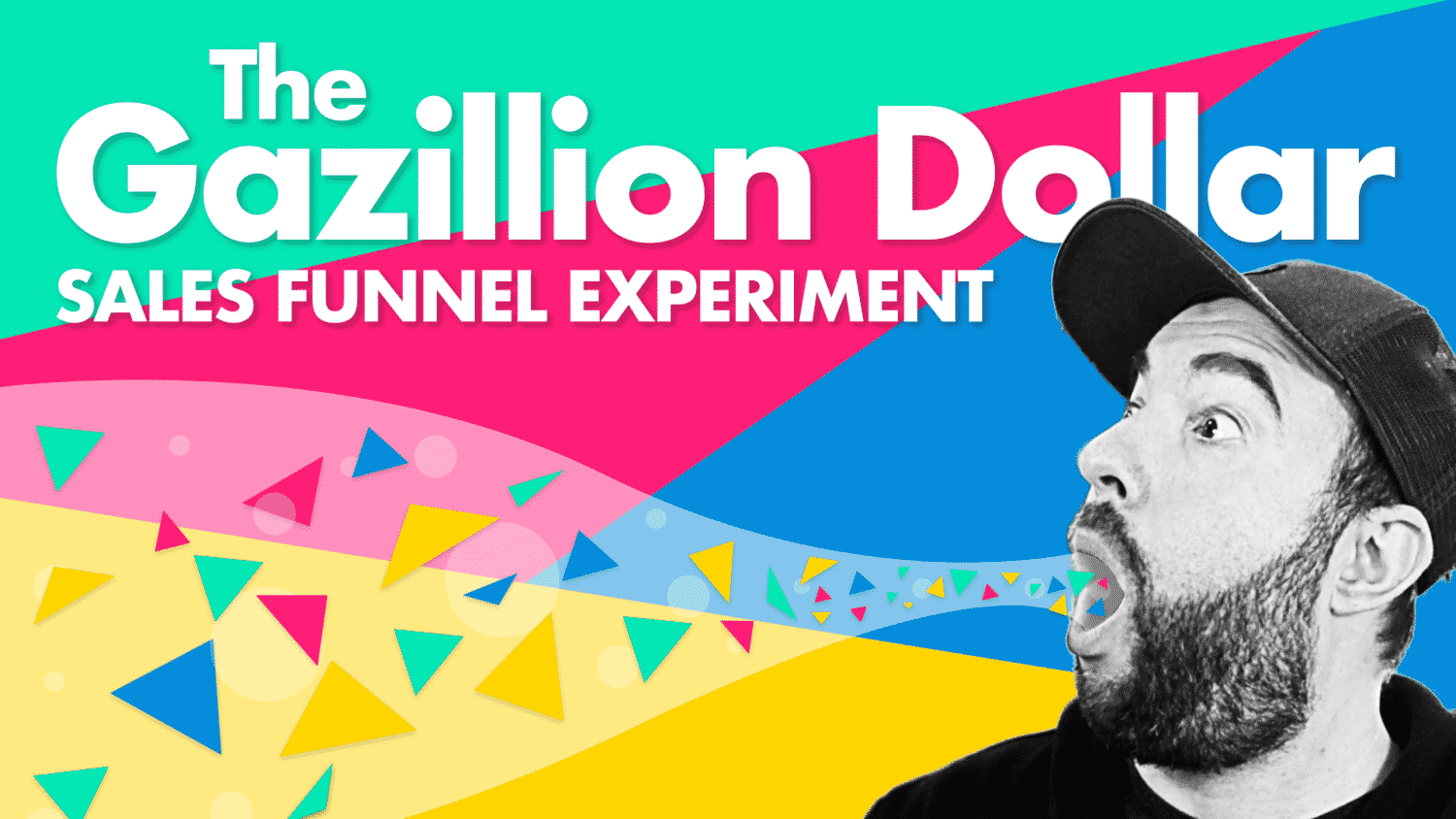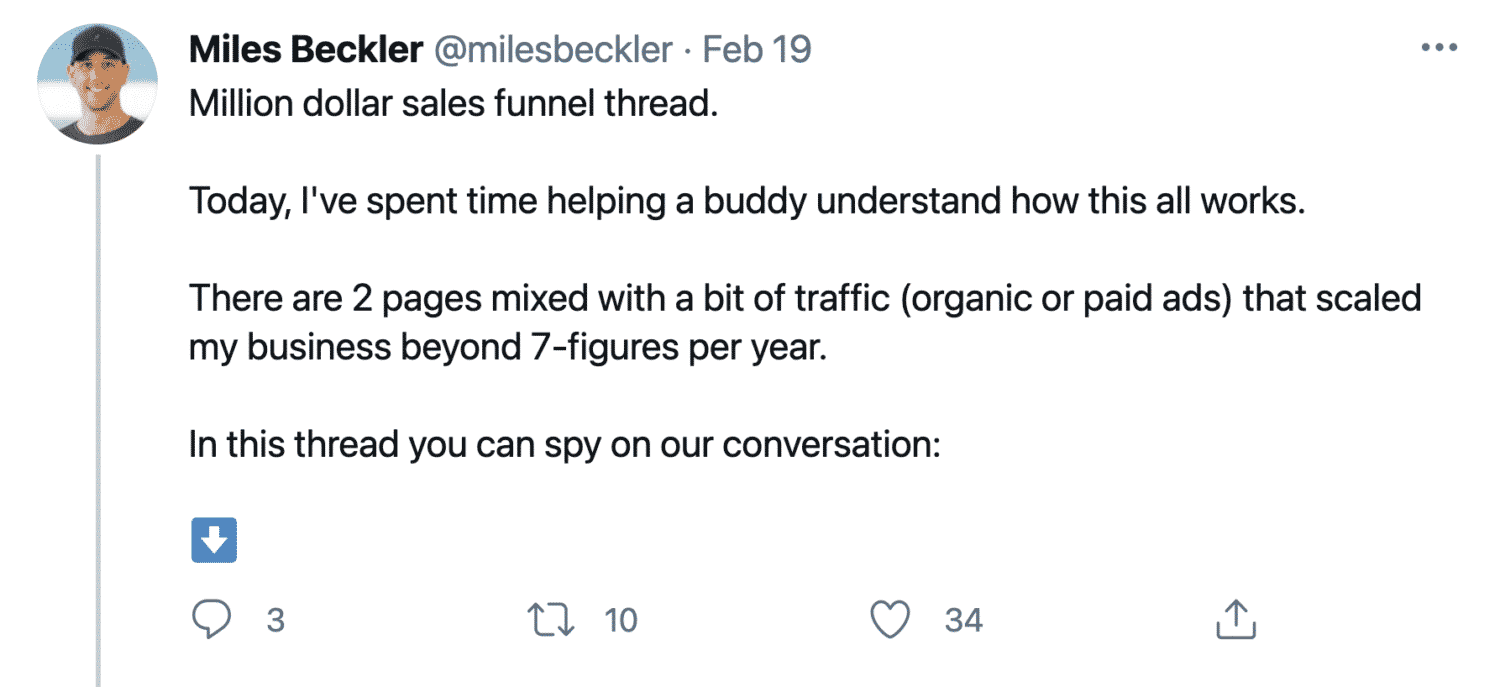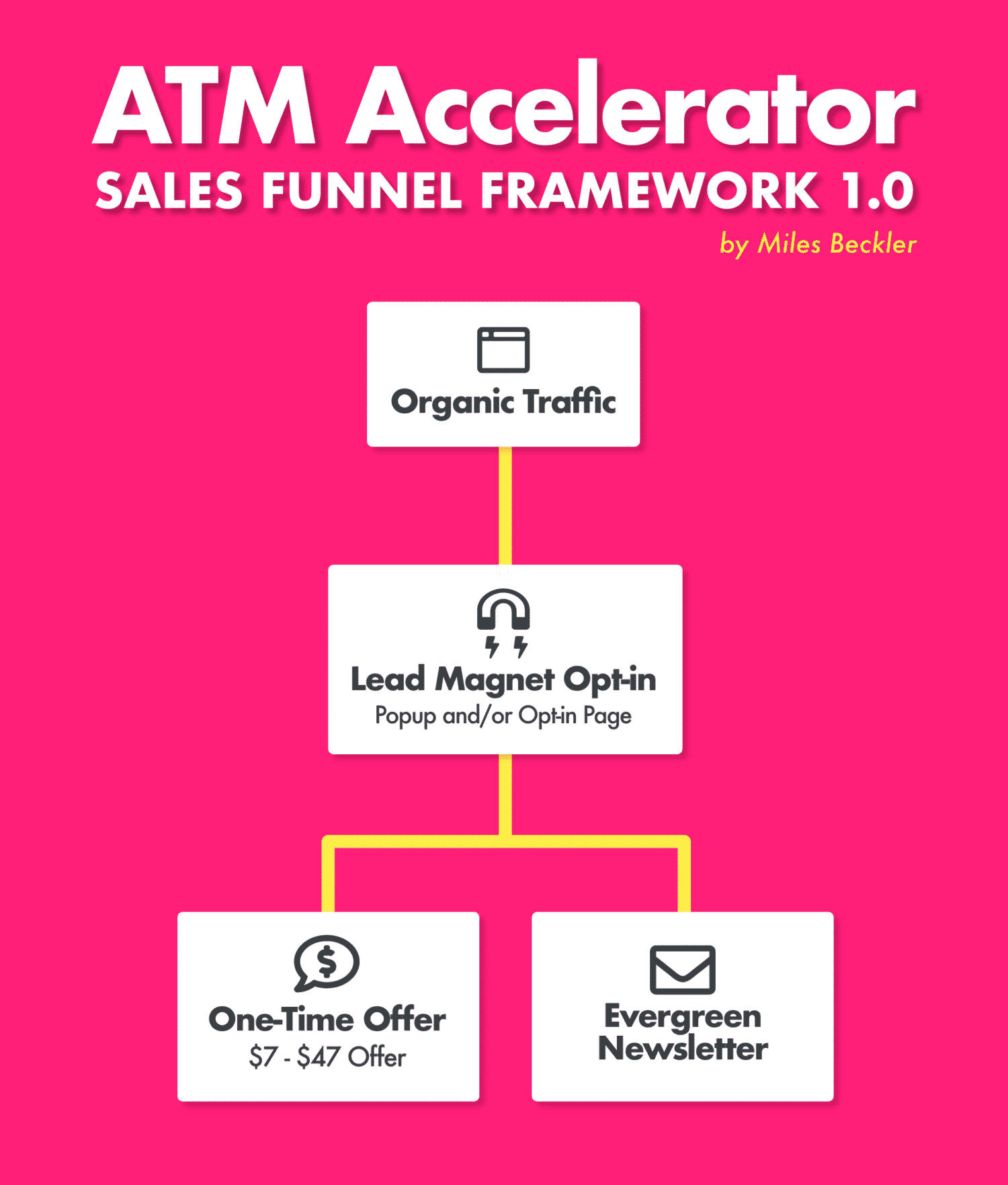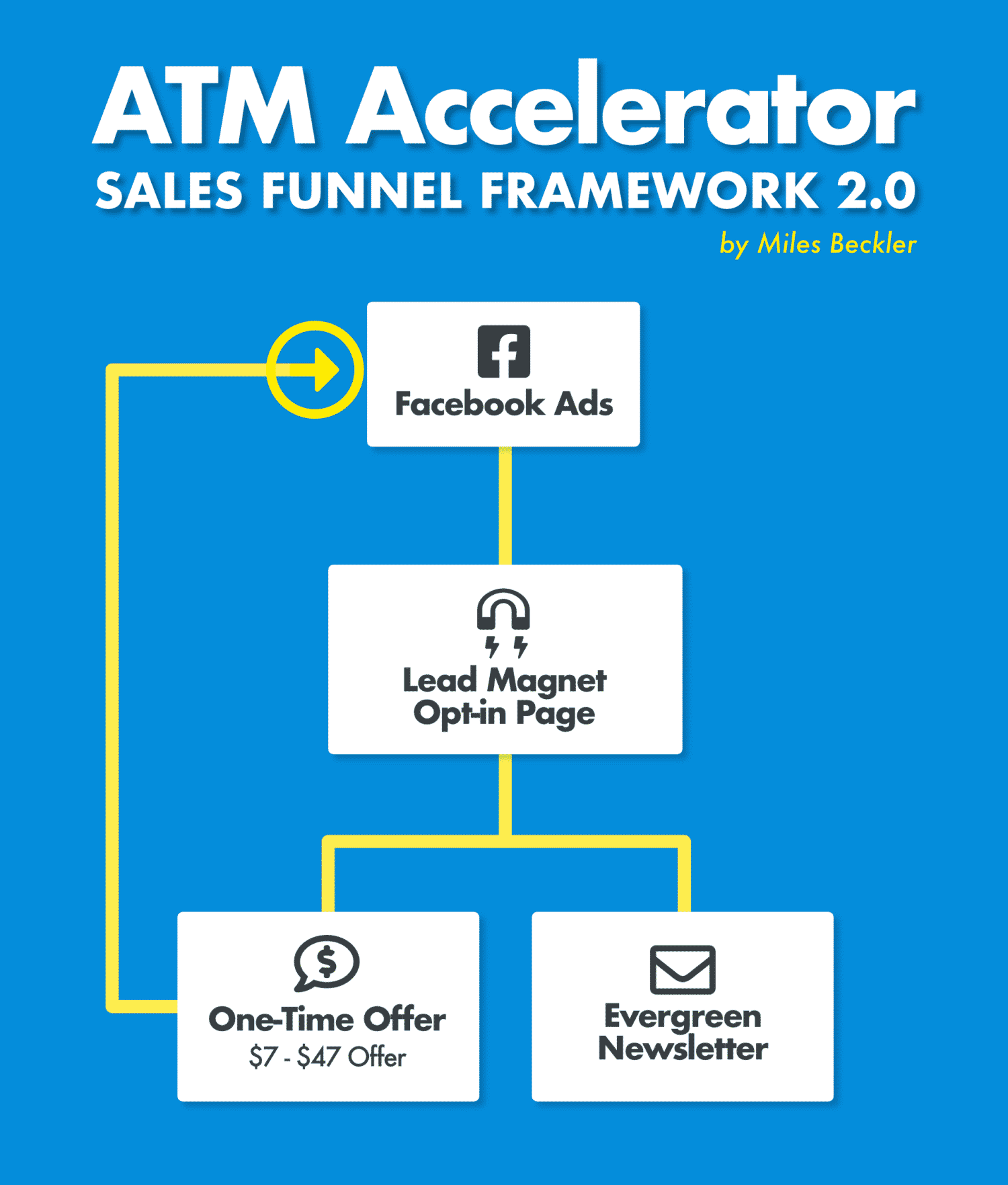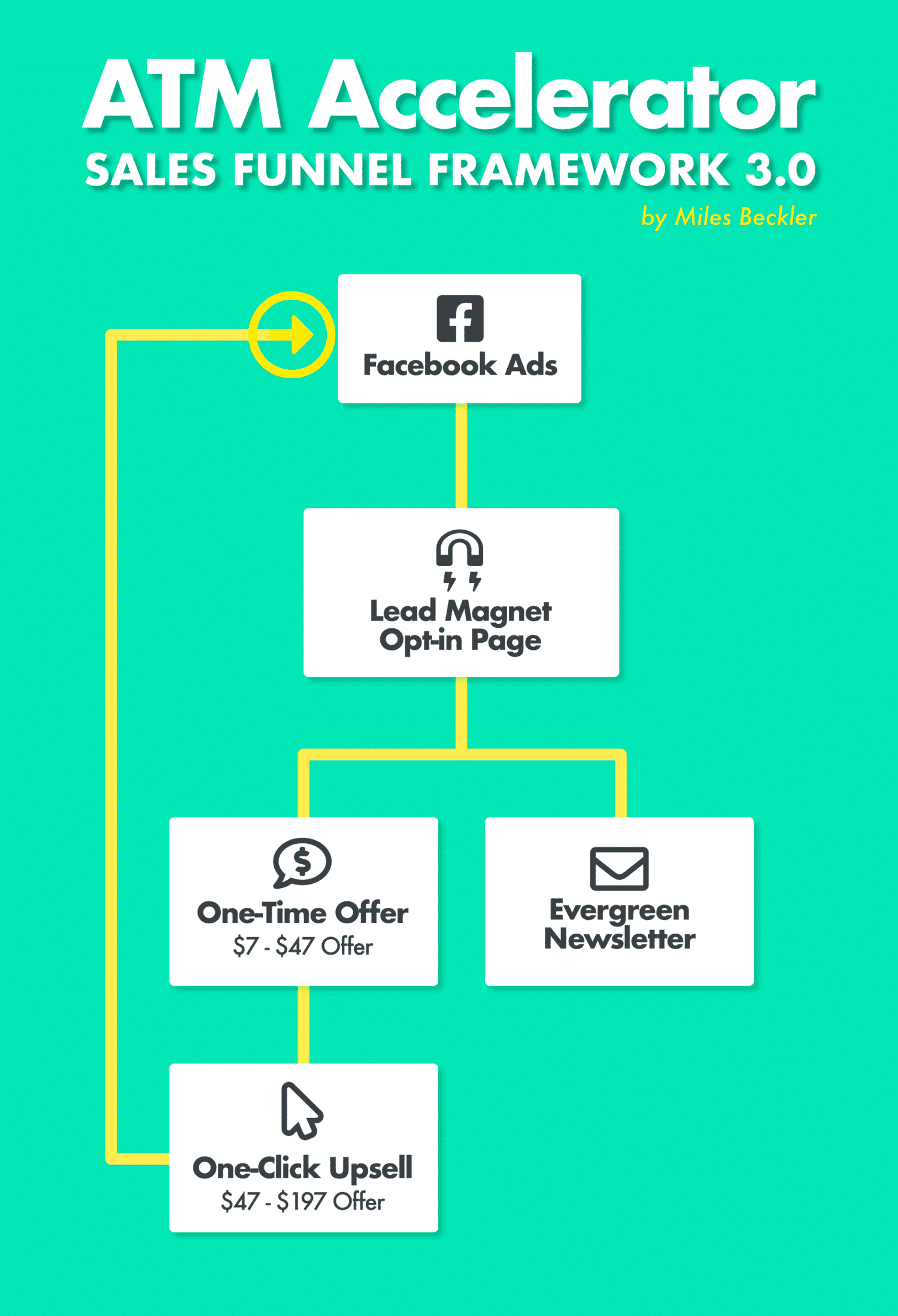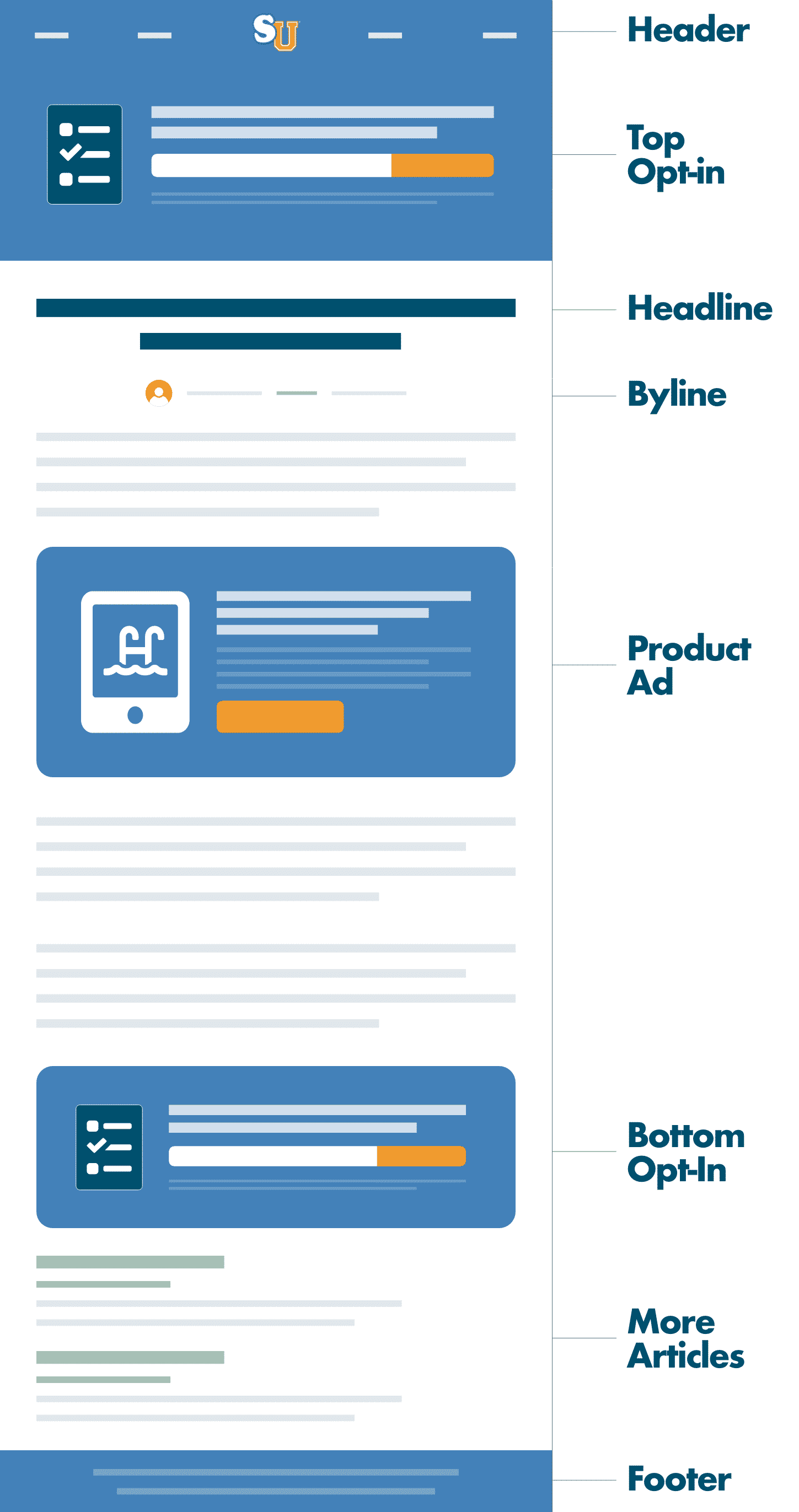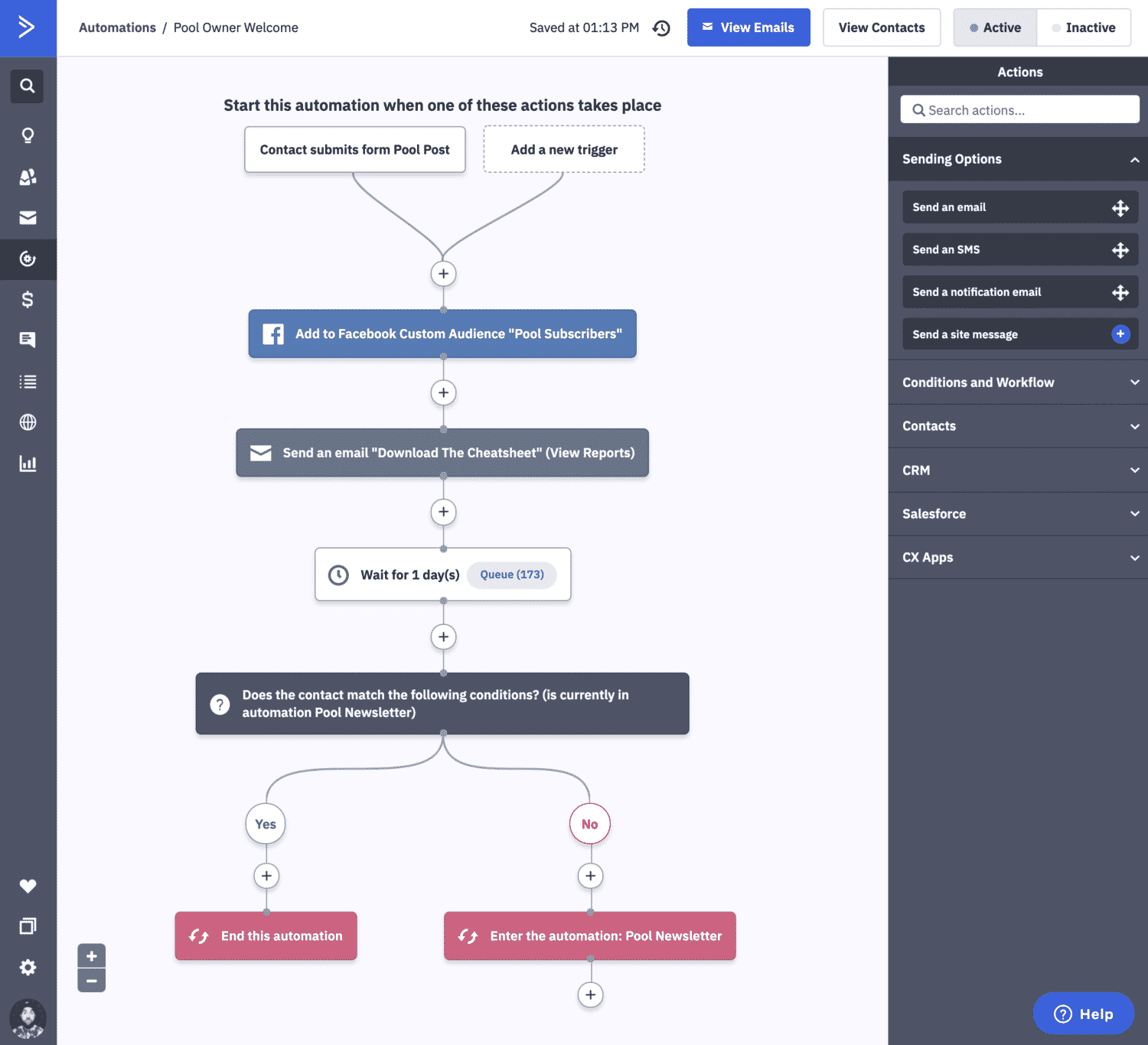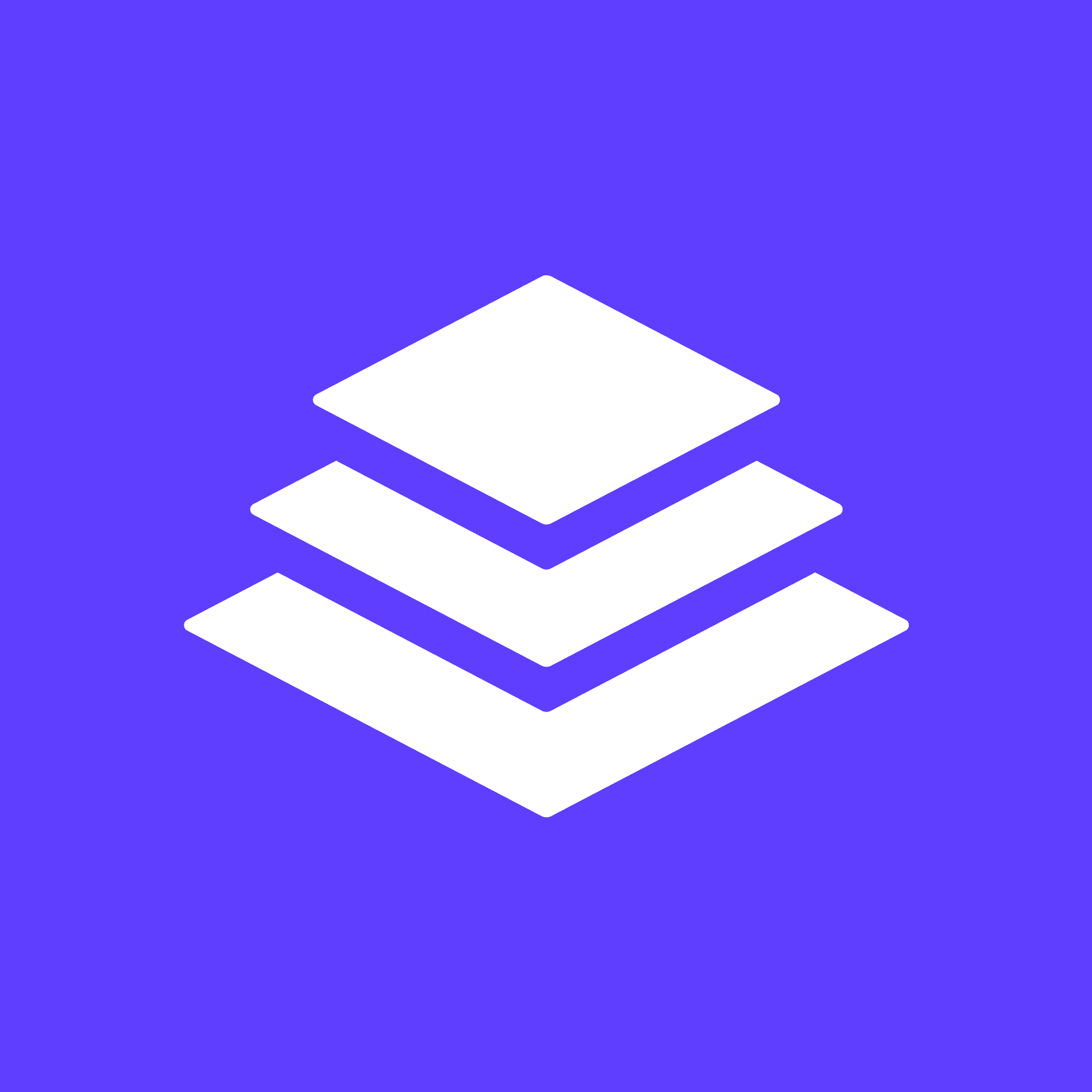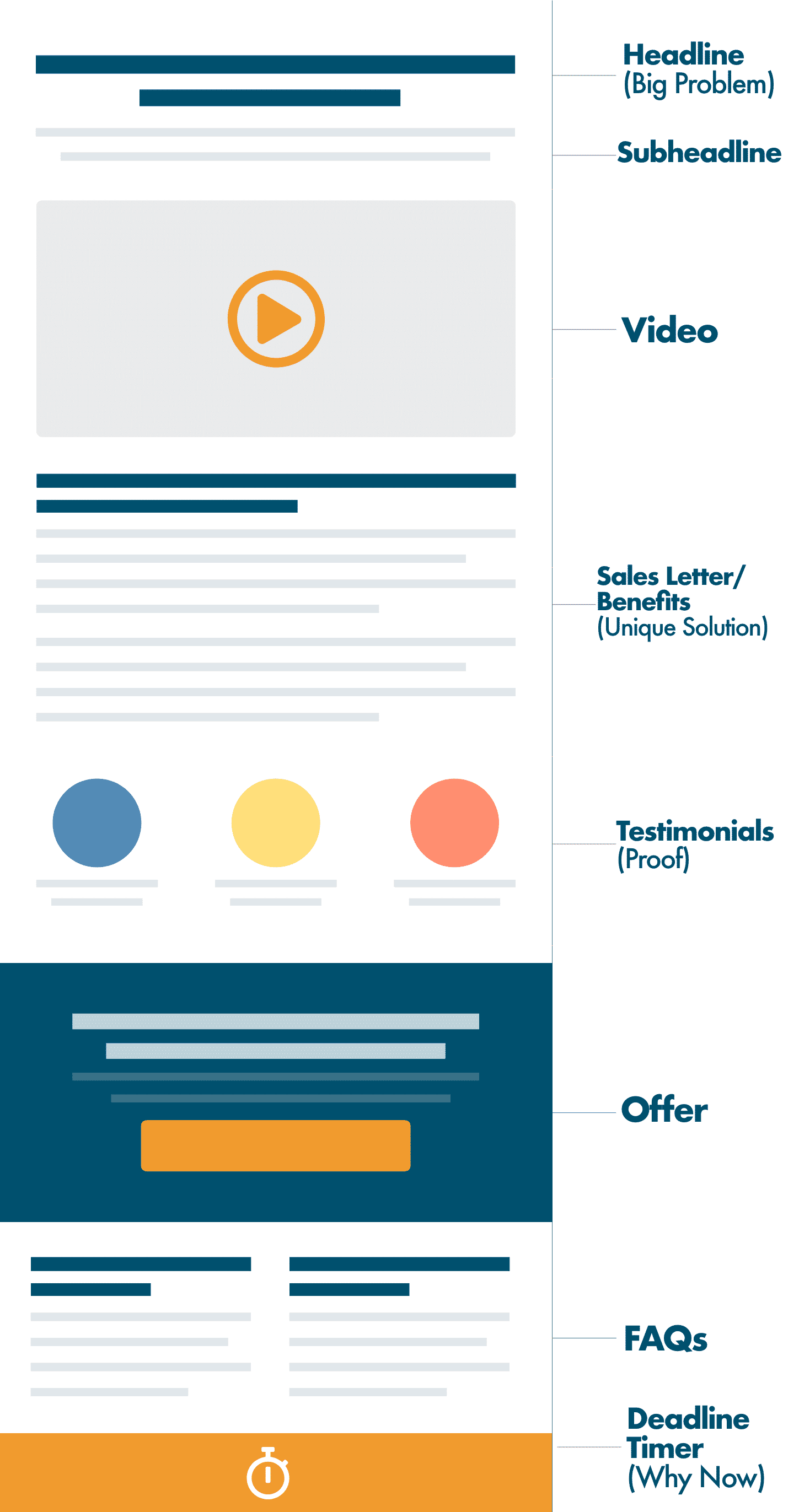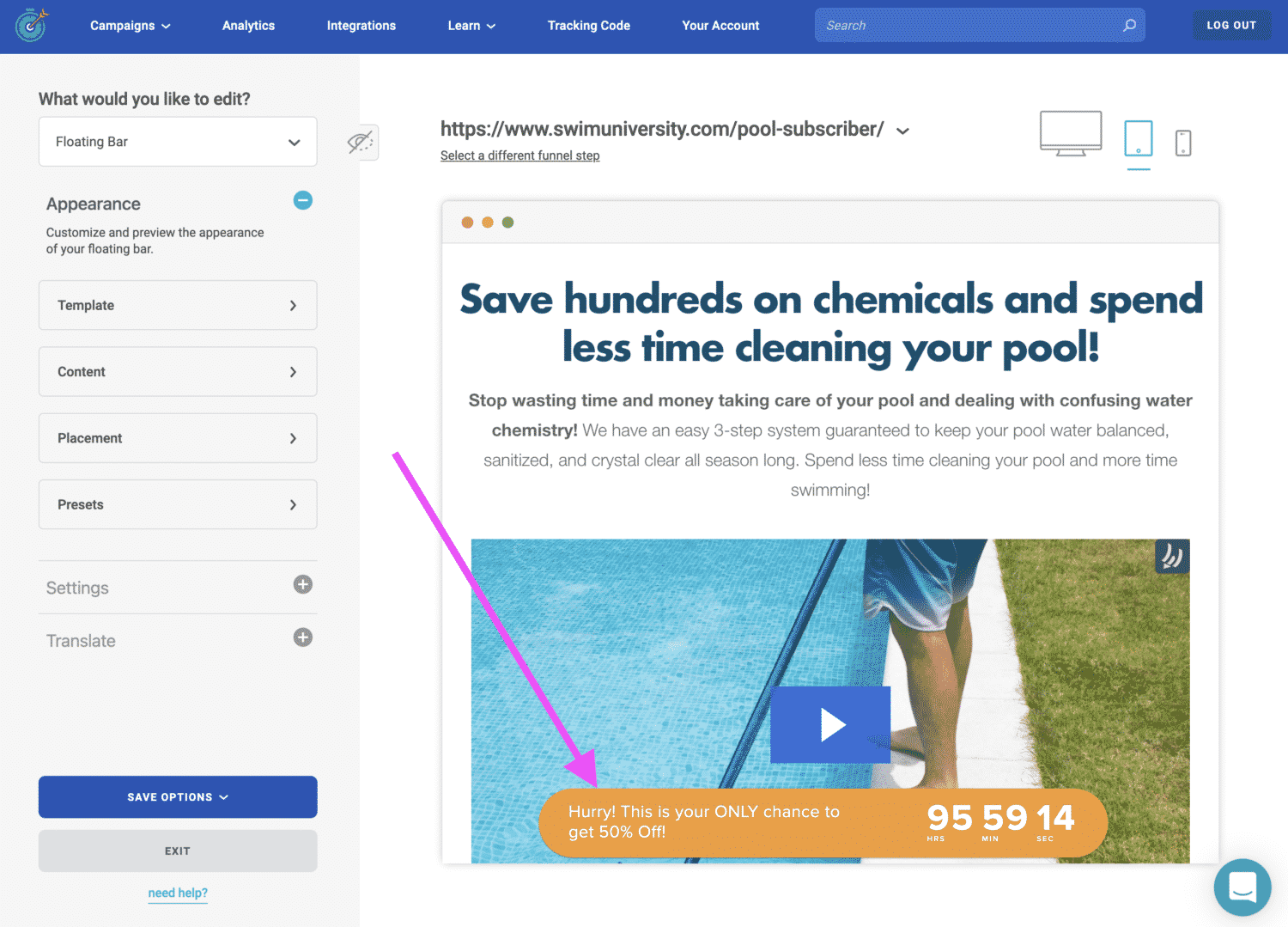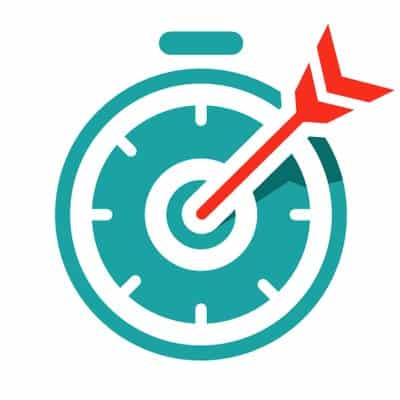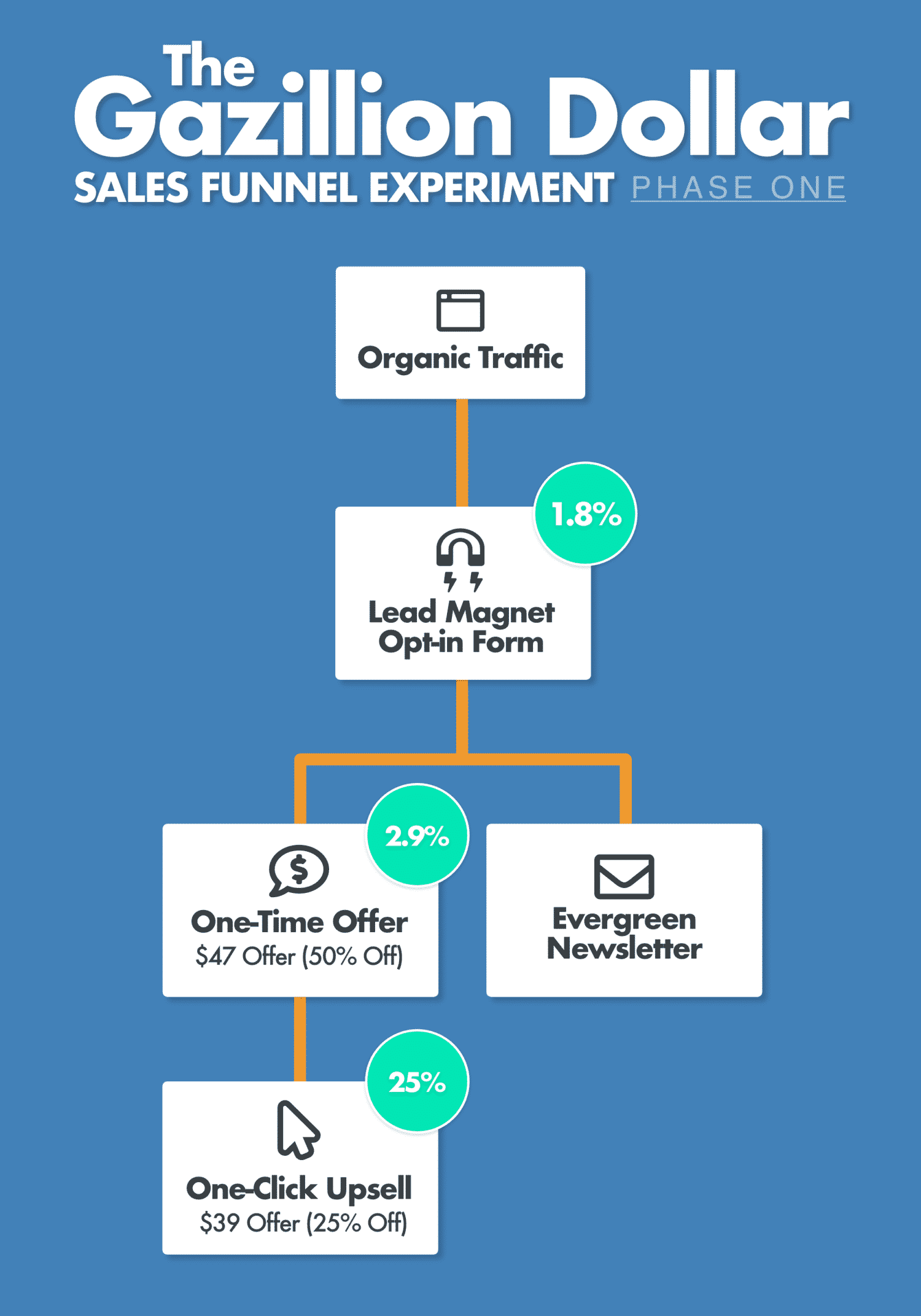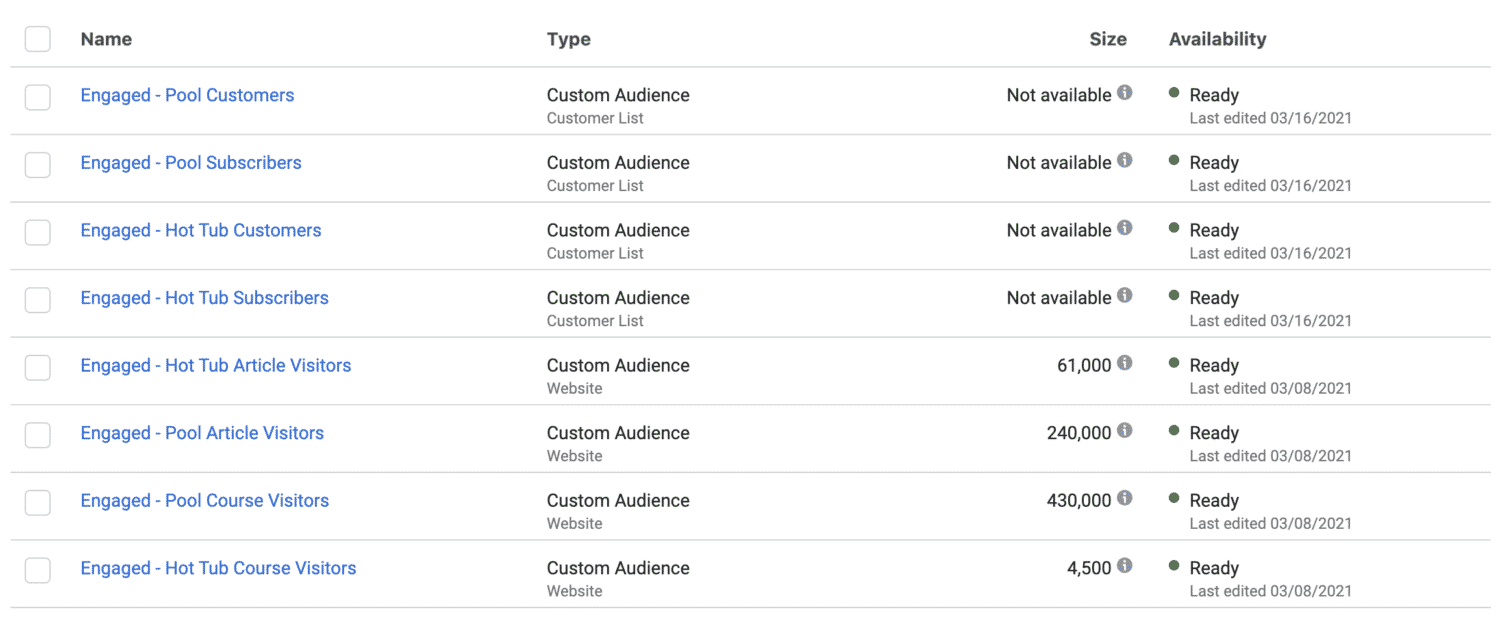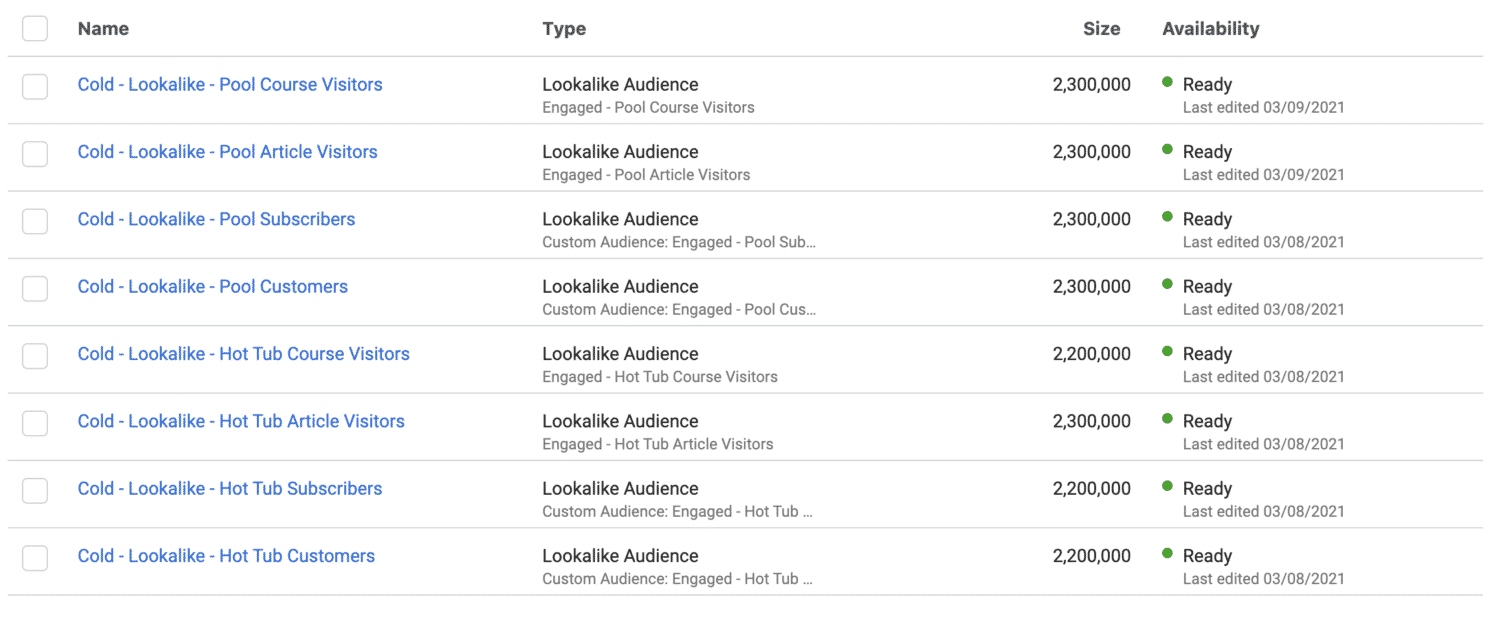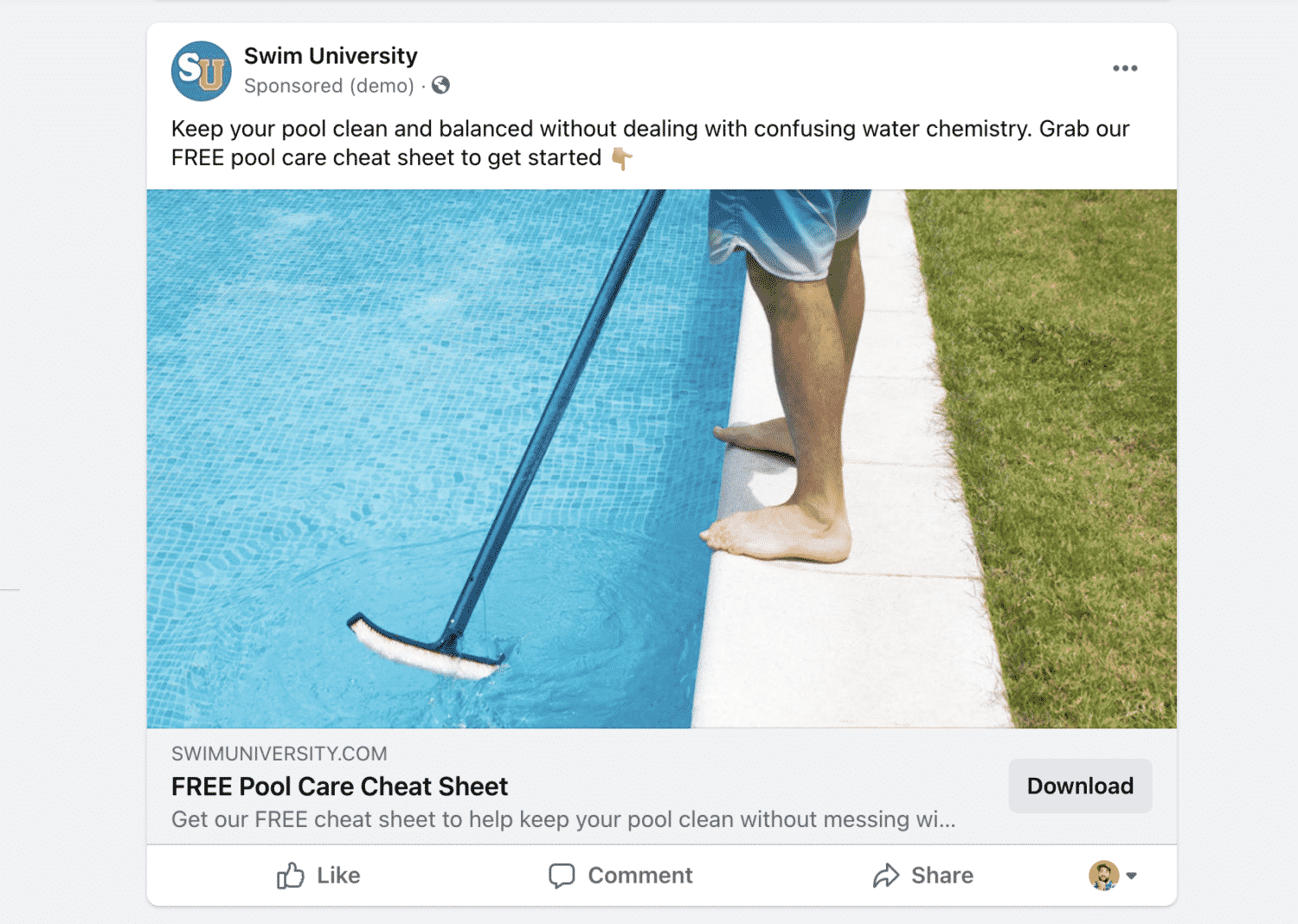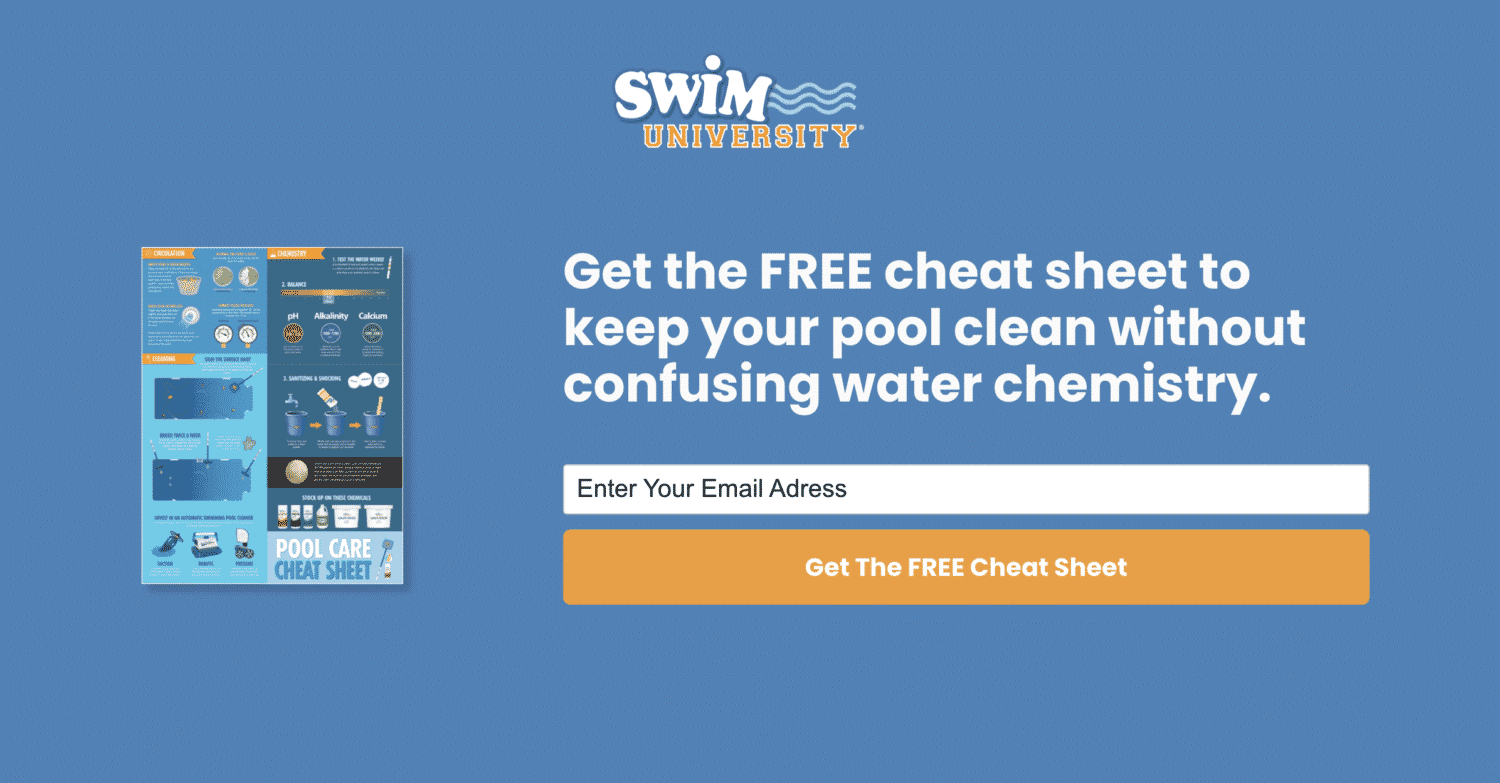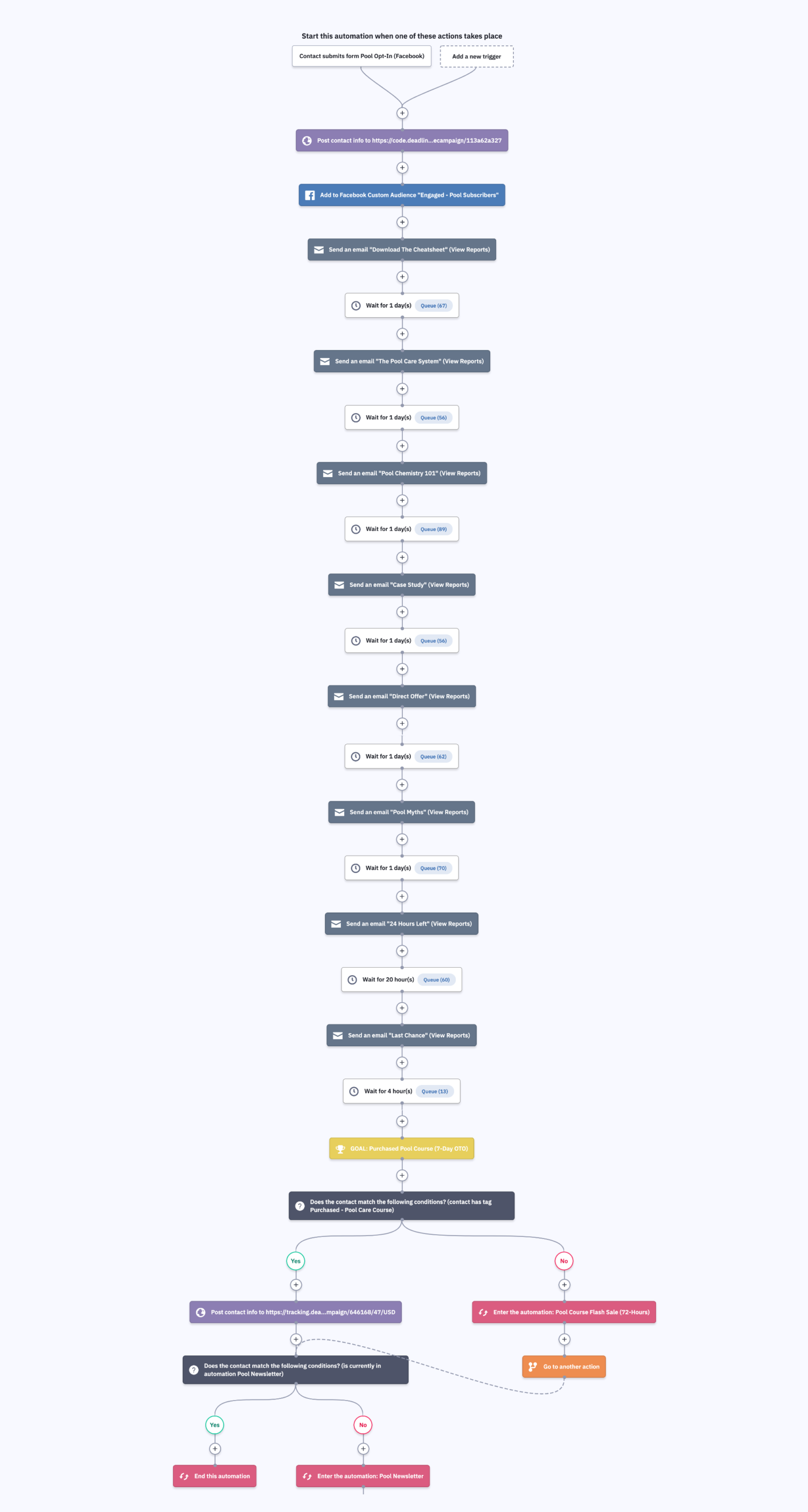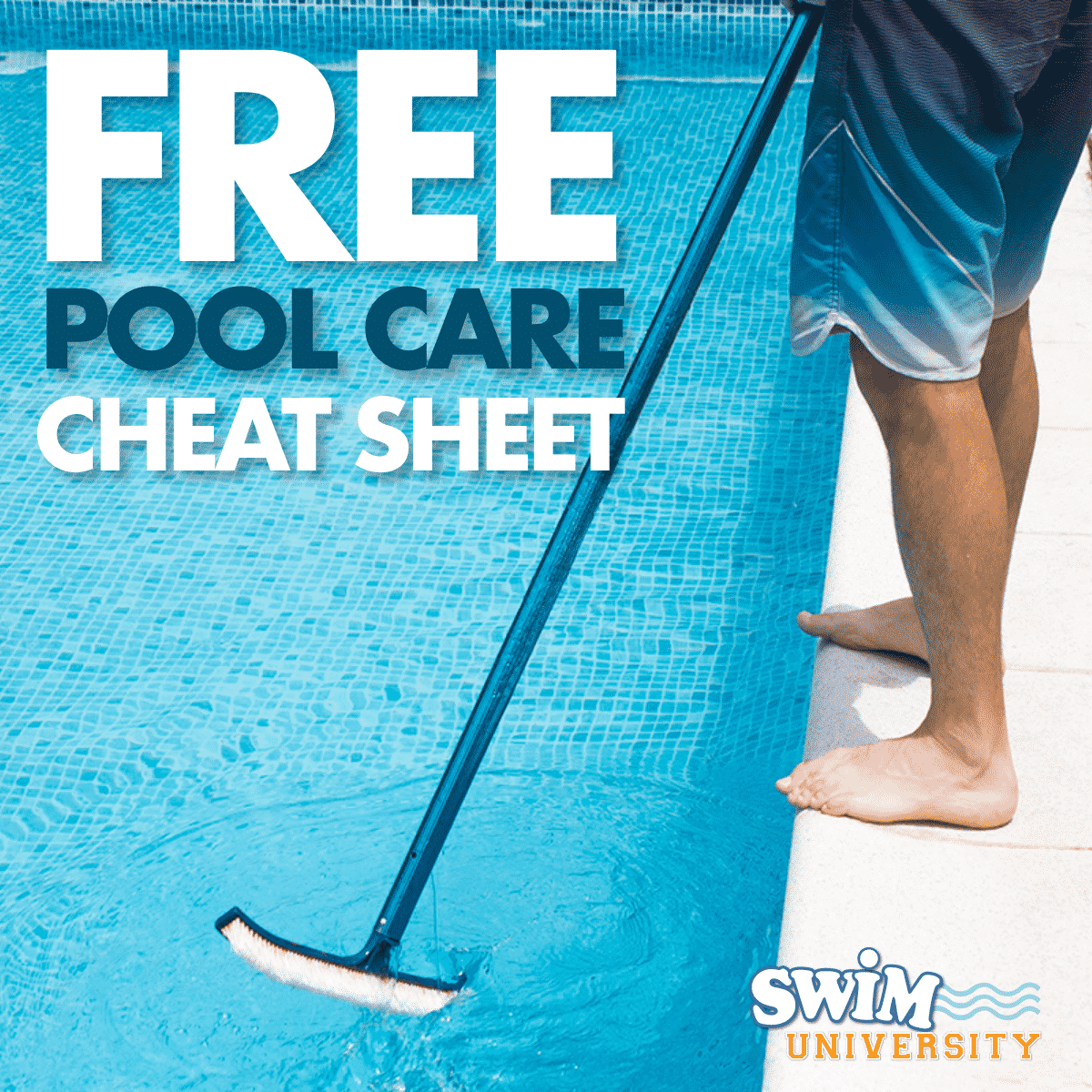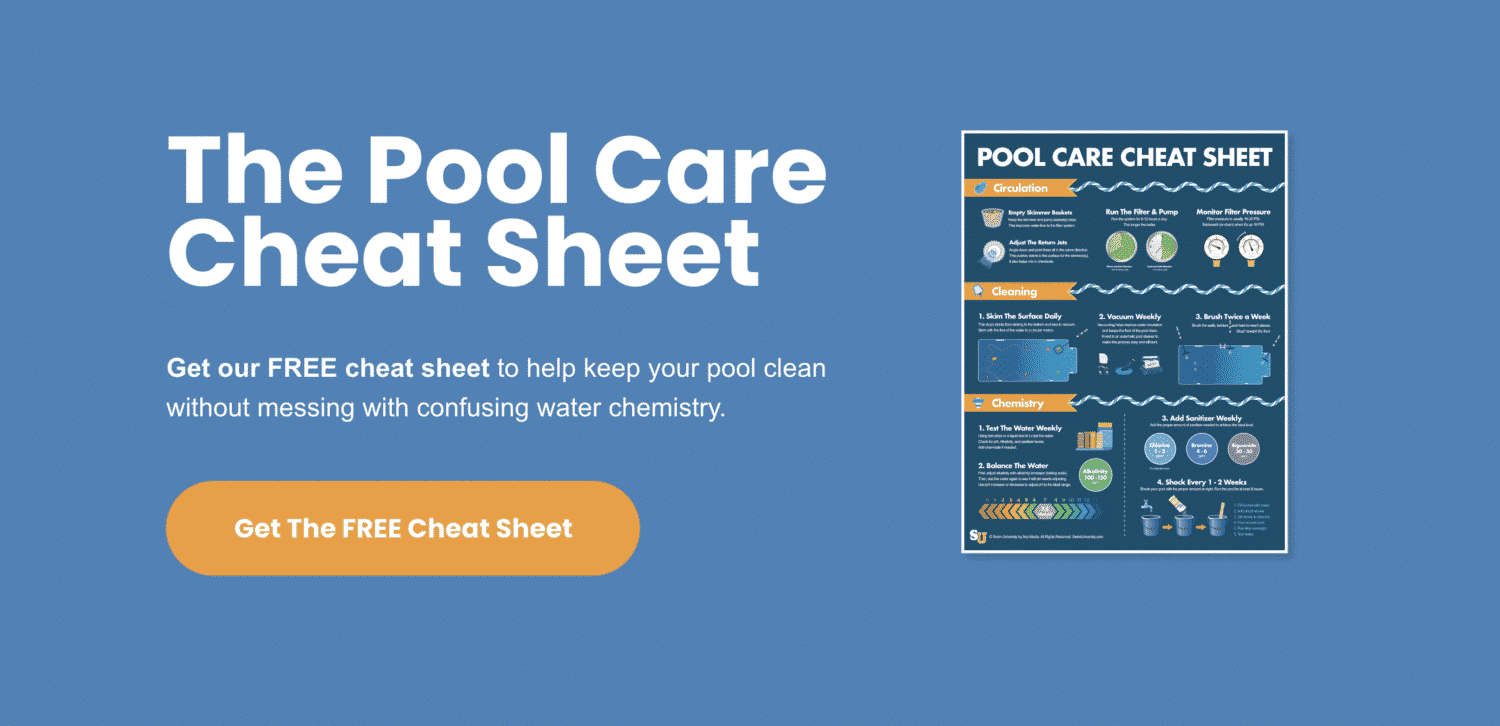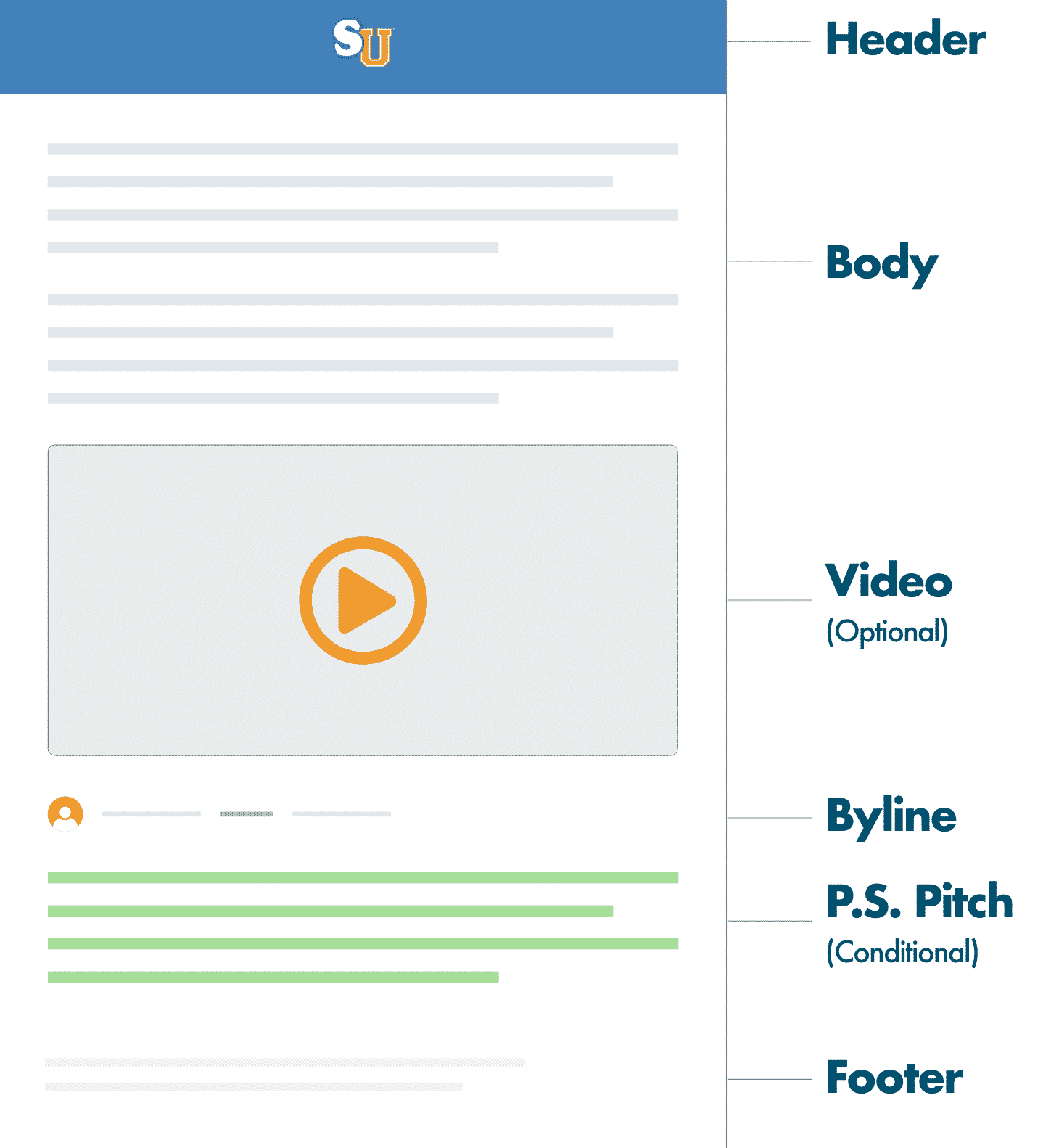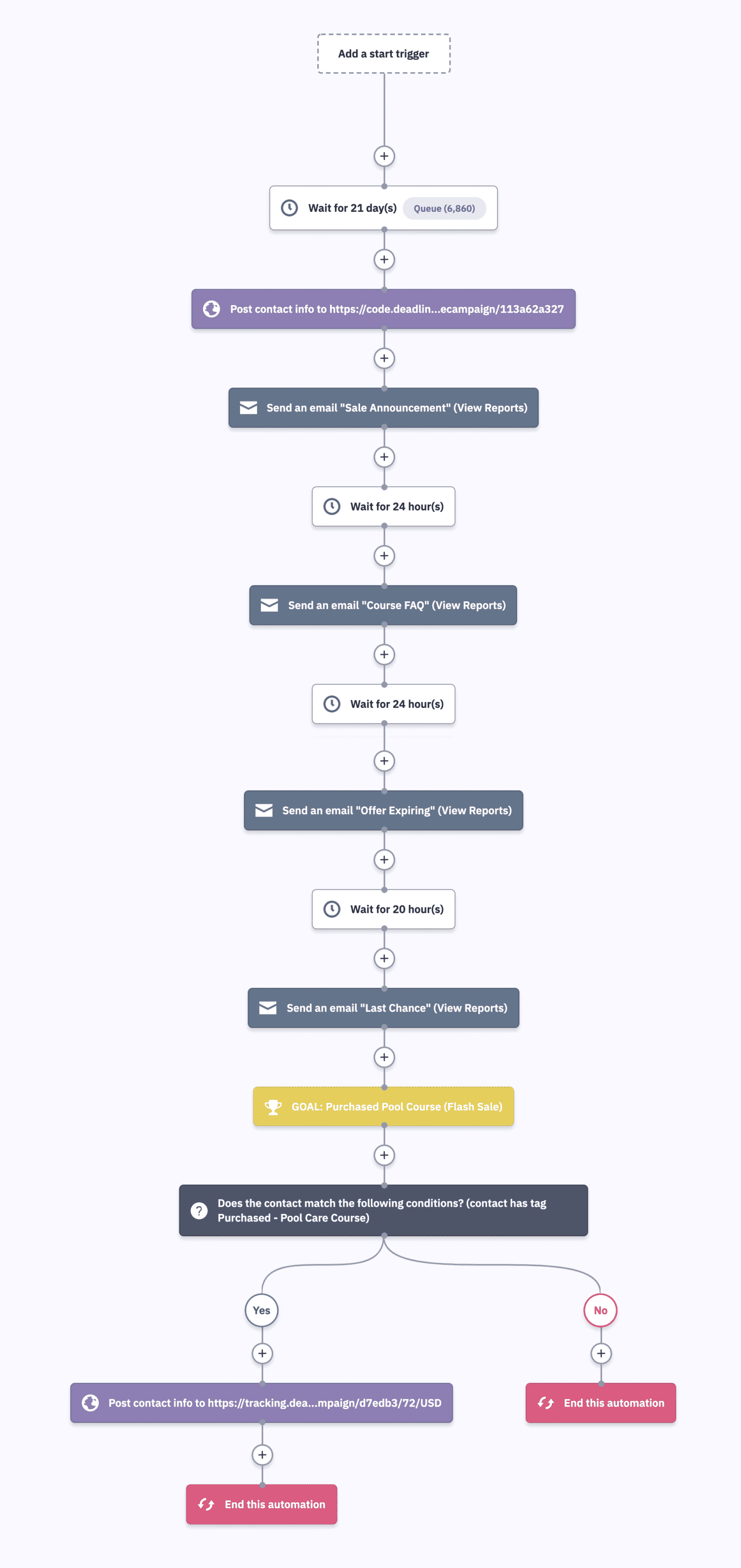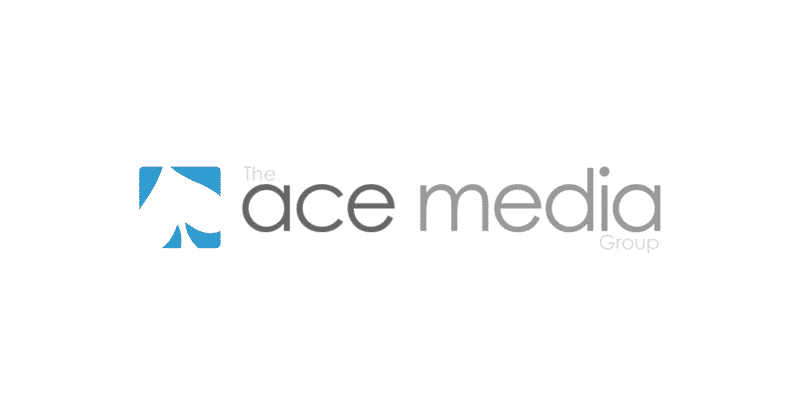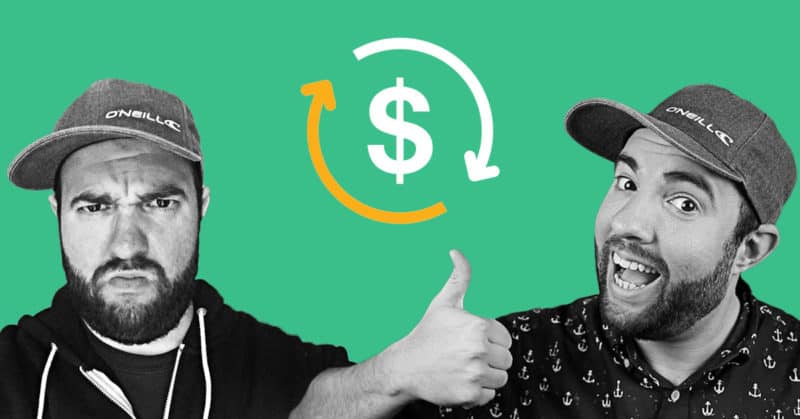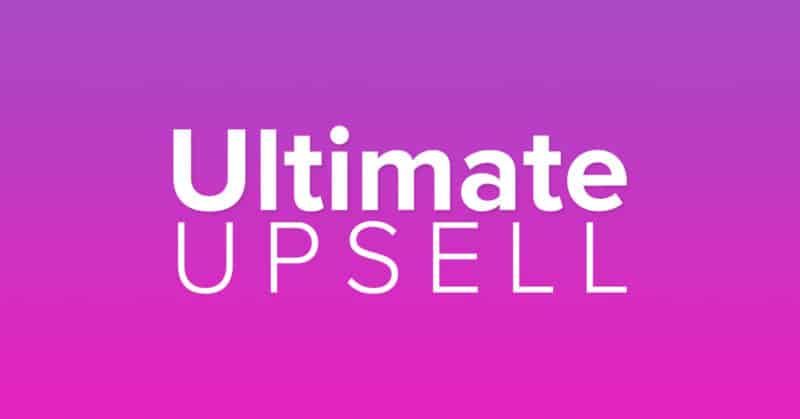Technically, this post is part 3 of my Website Optimization series (part 1 & part 2). But I wanted a punchier name this time.
Can I double the revenue from my website without creating or launching any new products? And can I do it by setting up a simple marketing sales funnel?
Let’s find out!
What’s The Reason For This Experiment?
I spend over $400 a month on email marketing services and have no idea if it’s working. I can safely assume it’s at least paying for itself, but that’s not good enough.
After Amazon fucked me and declaring I own a “lifestyle business,” I’ve been focused on ways to future-proof my business. And here are two ways to do it:
- Earn money through my own products instead of relying on affiliate marketing.
- Retain customers via email instead of hoping they find me on Google.
In other words, I need to protect the future of my business from Amazon and Google. Who knows what the fuck they’re gonna do.
The whole idea for this experiment started during an episode of Money Lab Live. Miles Beckler and I were doing website teardowns.
This episode got me thinking about my own websites and what I can do to improve the revenue and future-proof them at the same time.
After the show, I was on my weekly Happy Hour Zoom call with the Money Lab Pro community and we brainstormed a bunch of marketing ideas.
I shared some takeaways on Twitter which led to a back-and-forth Loom exchange with Miles that he eventually turned into a thread.
This strategy is what Miles calls the “ATM Accelerator” which stands for Audience, Trust, and Monetization. So with the framework, and some help from the Money Lab Pro community, the experiment is afoot!
My Online Business Overview
To give some existing context, here’s my website and products in a nutshell:
- Website: 200 published articles about pool and hot tub maintenance with roughly 400,000 visitors a month on average. Each article includes two spots to subscribe to our email list and one spot in the middle of the post to buy our products.
- YouTube: 127 videos with about 350,000 total views per month on average. Each video includes a pitch to get 10% off our flagship course.
- Products: a course/ebook about pool maintenance and another one about hot tub maintenance. Both are $97 each and sold via Podia. The prices of these products were increased from $49 to $97 in early 2021.
- Upsells: I also have a course about saving money with your pool and one about winterizing your pool. Both are “Upsells” to the flagship course and cost $49 each.
- Affiliate Marketing: Most of the income is made through selling our own digital products, but we earn about 30% of our revenue through Amazon commissions.
In 2020, the brand earned about $450,000. So, my goal is to turn it into a million-dollar-a-year business with this experiment by the end of 2021 and beyond.
Everything you need to sell online courses, downloads, and memberships without worrying about the tech. This is what I use to host all my online courses.
The Gazillion Dollar Sales Funnel (a.k.a The ATM Accelerator)
I’m going to outline three frameworks that Miles laid out for me via Loom videos on Twitter after seeing my quick customer flow journal entry.
ATM Accelerator 1.0
- Someone lands on my site via Google. My site gets 400-500k visitors per month on average when you account for seasonality.
- They find my content helpful and download my free cheat sheet. Ideally, I want 1-in-100 visitors/viewers (1%) or more to subscribe to my email list.
- They’re taken to a One-Time-Offer page where they can get my course for 50% off. The original price is $97 and discounted to $47. I would love for this to convert above 2%.
Short Term: Get a quick sale after they subscribe. But if they don’t, they’re put into my evergreen newsletter where they’ll be sent helpful emails.
Long Term: Once I have them as a subscriber, I can continue to email them about product sales for as long as they keep opening my emails.
ATM Accelerator 2.0
Once the funnel is set up for organic traffic to the website, we can start to play with paid marketing like Facebook Ads.
For paid traffic, I’ll have a dedicated opt-in page getting people to download my lead magnet. The goal of this page is to convert at 50%.
If I can successfully hit my target conversion rates, then I can do some math to figure out how much I can spend on ads to supercharge the funnel.
- I make $45.63 (this includes Stripe fees) for a one-time-offer (OTO) sale.
- If my OTO converts at 1%, that means I need 100 subscribers to earn $45.63.
- If my opt-in page converts at 50%, it means I need a Facebook ad to get me 200 clicks at $0.23 a click (or $0.45 per lead).
So for every $45 I spend on Facebook, I’ll earn $45. That’s the break-even scenario. If I can improve the conversion rate of my OTO, then I start to profit.
Also, each path a visitor takes to become a customer will be different. And will result in a different set of conversion rates.
For example, a new Google searcher who reads an article might be more likely to buy on the OTO page since the article has built up some trust in the brand.
On the other hand, someone on Facebook who’s been interrupted by my ad may not convert as well as a person actively searching for information on Google.
Either way, we have to test and make sure I can hit my target conversion rates. So I need to get all the pieces in place and start to measure them accurately.
ATM Accelerator 3.0
The next step will be to create a one-click upsell which will be what funds the paid ads going forward. The goal here is to increase the total value of a customer by adding more products.
Thankfully, I already have two upsells to work with and Podia has built-in one-click upsells.
The Gazillion Dollar Sales Funnel Plan
This is a multi-phase plan that starts with setting up the core pages and expanding into email marketing and paid advertising.
Phase One
The first phase is getting the website set up including the opt-ins and OTO. I’ll need to set up some light email marketing stuff to at least deliver the lead magnets.
- Create the Lead Magnet and Opt-in Boxes on the website.
- Create the OTO Page with Steep Discount and Deadline.
- Set up an automation to deliver the lead magnet via email and more.
Phase Two
The second phase is using Facebook Ads to pump more traffic through the funnel and see how well it converts.
- Create a special opt-in page for Facebook traffic.
- Create a Facebook Ad to generate leads.
- Set up an automation to deliver the lead magnet via email and more.
Phase Three
The final phase is setting up automations. I already put emails in place to deliver the lead magnet. But now I need to supercharge it to really get the OTO cranking.
- Build Out The New Subscriber Welcome Series.
- Create a Flash Sale Automation.
- Create Tracking Dashboard in Google Data Studio.
Phase One: Creating Opt-Ins and an OTO
First, I wanna test different lead magnets for my audience. I tend to think everyone wants a free course or video. But I’ve been proven wrong many times.
Creating Right Lead Magnet for an Organic Audience
I didn’t have to create anything new. I’ve created a lot of PDFs, checklists, videos, and infographics over the years. So I just repurposed them for this experiment.
- Video Crash Course on Water Chemistry
- Pool Care Cheat Sheet
- Pool Maintenance Checklist
I ran a quick experiment to see what people responded to better. And the cheat sheet got more conversions. I just kept an eye on Google Analytics for the test.
The Website Layout
I didn’t have to change much on the website to add the new opt-in boxes. I decided to go with this flow and avoid putting in popups.
- The Top Opt-In is right below the main header. This is like a permanent welcome mat that doesn’t have any annoying animations. Most of the conversions happen here.
- The Product Ad is in the middle of the post which has a link directly to my flagship product. This has been converting at around 2% so I didn’t wanna mess with it.
- The Bottom Opt-In is just a repeat of the content at the top.
The Email Marketing Side
The process for subscribing is simple and it was all done with ActiveCampaign.
- When they enter their email address, they get redirected to my OTO page.
- At the same time, they’re put into an ActiveCampaign Pool Owner Welcome Automation that delivers the cheat sheet.
- Then they’re dumped into my evergreen newsletter.
This is just a quick setup of the automation. This will get more complex as I improve the funnel. For now, we’re just getting the core pieces in place.
Creating The OTO (One-Time-Offer) Page
The OTO sells my flagship courses for 50% off. I recently updated the courses and raised the price. This allowed me to create a more compelling one-time-offer discount.
The OTO page is a copy of my original course sales page. I decided to invest in using LeadPages to create all my additional pages for this experiment.
LeadPages allows me to make pages fast without having to hand-code everything in HTML which I would normally do. Plus, I can perform easy split tests.
This is what I use to quickly build landing pages for all my websites. The pages load super fast and allow me to split test.
In order for the OTO page to work, we need all the pieces of a good sales page in place. Miles broke this down in one of his videos which I’ll outline here.
- Big Problem
- Unique Solution
- Proof
- Offer
- Why Now
Adding Deadline Funnel to The OTO Page
The “Why Now” section is where I need to create urgency. But I’m not sure how long the deadline needs to be. I have a few different ideas.
- The 15-Minute Deadline: When someone lands on my site, they could be ready to buy. My audience is short on time, so maybe a 15-minute deadline is all they need.
- The 7-Day Deadline: My audience is older. They’re not checking it every hour nor do they practice Inbox Zero. Plus, they’re probably at work when they subscribe and can’t whip out their credit card. So giving them more time to get home and buy later could be the right move.
I’m gonna start with the 15-minute deadline using a tool called Deadline Funnel. I have a feeling people don’t check emails as fast as I do. Plus, I got them on the OTO page and I want them to convert.
This is what I'm using to create countdown timers on my sales pages and marketing emails.
Results For March 2021
From March, the numbers already look really promising.
- 193,395 organic visitors to pool articles.
- 3,402 subscribers (1.8% conversion rate).
- 100 sales from the OTO page (2.93% conversion rate).
- 25 upsell sales (25% conversion rate).
Wow! So far, I’m really happy with those numbers. Being over 2% for my OTO page is great. But that’s with organic traffic from Google.
What about traffic from Facebook?
Phase Two: Facebook Ads
Now I’m going to run Facebook Ads through the exact same funnel I set up for organic traffic. Hopefully, they’ll have the same conversion numbers.
Building Out The Audiences
There are two types of audiences I have so far: cold and engaged.
The first thing I did was made sure my pixel was installed correctly, which it was. And I created a few engaged audiences of pool owners.
- People who visited a page with “pool” in the URL in the last 28 days.
- People who subscribed to my pool owner email list.
- People who visited my pool care course sale page.
- People who purchased my pool care course.
From those audiences, I created lookalikes. These are my cold audiences.
The Facebook Ad
The Facebook Ad is to get retargeted people to subscribe via an opt-in form who didn’t subscribe on the site. I set up one ad for my opt-in page.
I’m keeping things simple to start. The image is from 123RF. The copy I wrote myself. And apparently, the Download button works pretty well according to Miles Beckler.
This ad is only going to people who’ve visited Swim University and saw an article about pool maintenance in the last 28 days. I’ll let this ad run for a while.
When they click on the ad, this is all that’s on the page they’re taken to.
According to Leadpages, this opt-in page is converting at 46% from Facebook traffic only.
The email opt-in form on this page is a unique form I created in ActiveCampaign which subscribes them to my list and adds a tag called “Source – Facebook.”
The Results From The Facebook Ad (March 2021)
I started running ads in the middle of March 2021. So far, here are the results:
- Ad Spend: $471.28
- Average CTR: 5.65%
- Average CPC: $0.17
- Subscribers/Leads: 784
- Cost Per Lead: $0.60
- Purchases: 3 ($136.87)
I’ve invested $334.41 of my own money into Facebook Ads and got 781 leads who haven’t bought yet. This means I’ve spent $0.42 per lead/subscriber.
This strategy is not profitable even though my target Facebook numbers look good. What’s not working is conversions on my 15-minute deadline OTO page.
It’s possible these subscribers will buy later as they get emails with sales pitches. Once I set up email automations, I’m hoping conversions will improve for Facebook traffic.
But for now, I want to try a different strategy for Facebook Traffic.
The 7-Day Deadline Hypothesis
Organic traffic from Google are people actively looking to solve a pool problem. When they find Swim University and subscribe, they’re fully invested and more likely to buy on the OTO page.
However, even though I’m retargeting former website visitors, these people are on Facebook doing…well, whatever the fuck people do on Facebook.
I’ve interrupted their Facebook time. They’re not fully invested in solving a pool. So they need more than 15 minutes to act on buying a product.
So instead of offering a 15-minute deadline on my OTO page, I’m giving them 7 days. And using an automated email sequence to build trust and sell them the product.
Setting Up The 7-Day OTO Page and Email Automation
Leadpages made this easy. I just duplicated the original sales page and changed the coupon code for tracking. This also allows me to create another Deadline Funnel campaign for this page set to 7-days rather than 15-minutes.
All of the Facebook subscribers are dropped into a unique automated email sequence I’m calling “Pool Owner Welcome (7-Day OTO).”
This automation is based on an Autoresponder Swipe File I got from taking Miles’ Facebook Ad course called SocialAdClass.com. Here’s the gist of each email:
- The Welcome Email: Deliver the pool care cheat sheet and let them know what to expect and who we are as a company/brand.
- The Big Idea: I tell them about my unique pool care system which I’ve been teaching since 2006. Link to a post that describes it in more detail.
- The Problem Solver: I link them to a post that’ll solve one of their biggest problems. For me, that’s pool water chemistry.
- The Case Study: I send them a real story that was written to me by a customer about how the book completely changed their pool life.
- The Direct Offer: Basically just a big-ass pitch for the product.
- The Skepticism Killer: Show them that my course is legit in every way!
- The Last Chance: Just a reminder the 7-day offer is almost over. I included another reminder email when there are only 4-hours left in the OTO too.
A few of these emails include a countdown timer from Deadline Funnel. And all the tracking is set up through there so I know how well this campaign is working.
I need to let this run for a least a week to know what the conversion rates are. In the meantime, I’m moving on to phase three.
The Results From The Facebook Ad (April 2021)
I was able to improve the conversion rate of my ad and my landing page by a couple of points. First, I ran an A/B test on the Facebook Ad image.
The new variant had words and was taller. And I lowered the CPC. Below is the new ad image.
The CTR (Click-Through-Rate) went down from 4.23% to 4.12%. But the CPC (Cost Per Click) went down $0.79 to $0.69. And I got more leads, 123 up to 141.
Then, I ran a split test using Leadpages. The original variant is above. The new page (which won) is below.
I also redesigned the cheatsheet right before doing the test. So during the time of the test, both images were the same. The only difference is that the new page has a popup when you click the button instead of a form embedded on the page.
According to Leadpages, popups like this work better at converting people. I have no idea why, but they were right in this case.
My conversion rate jumped from 46% to 50%.
After two weeks of measuring the new 7-day automation. Here are the results:
- I got 962 leads/subscribers at $0.69 each. I spent a total of $663.78.
- Out of those 962 leads who finished the automation, 13 of them bought (1.35% conversion rate).
- Each sale earned me $45.63 (after Stripe fees), which means I made $593.19.
- I only lost $70.59.
When you take $70.59 of the money that I actually spent and divide it by the number of subscribers who didn’t buy, this means only I spent $0.07 for each subscriber.
Let’s take this even further and only count the number of subscribers who actually engaged. 338 subscribers have not opened a single email or clicked a link since they subscribed from Facebook. These are duds.
That leaves me with 611 active subscribers who have not purchased anything yet. Meaning the true cost of an active subscriber from Facebook is $0.11.
Honestly, I’m happy with those numbers right now because things are getting interesting.
My job is to get some of these subscribers to convert later on. And out of the 611 subscribers, 42 of them (6.87%) clicked the link to buy but didn’t. So I know they’re at least somewhat interested.
Now we play the long game to make back $70.59. All I need is ONE Facebook subscriber to buy in the future to break even. And I already know it’ll work.
Phase Three: The Long Game
According to Miles, 80% of sales happen after the 90-day mark.
If true, then those Facebook subscribers should pay for the ads later. Jason Resnick on Twitter backed up this claim (albeit in only 30 days).
However, I’m not trying to create a 90-day email sales sequence. Instead, after the 7-day OTO sequence, they’re dropped into an evergreen newsletter.
Each email contains a soft pitch for my product if they didn’t buy yet. This is part of my loopable, seasonal automated email sequence in ActiveCampaign.
These emails are sent out for as long as you wish to be on the list. And the pitches will remain in the emails unless you buy. They’re conditional blocks in ActiveCampaign.
The Flash Sale
Following Jason’s advice, I’m creating a 72-Hour Flash Sale automated email sequence that runs 21 days after the 7-day sequence.
- The Sale Announcement: Basically just announces that we’re running a 72-hour flash sale using Deadline Funnel.
- The Course FAQ: We highlight and answer frequently asked questions about the course.
- The Final Offer: A notice there’s only 24 hours left in the flash sale.
- The Last Chance: A final 4-hour warning.
All of the sales are tracked in both Deadline Funnel and ActiveCampaign with an Automation Goal.
I actually ran about 13,000 previous subscribers through this already. And made 53 sales. Not exactly the greatest conversion rate (0.4%).
But to be fair, they were not warmed up yet. And it was too early in the season. I just wanted to see what happened.
This is set up and running right now. I’ll have more data on how well this is doing by the end of April 2021.
Stay tuned! Because that’s when I’ll wrap up this experiment and layout all the final numbers to see how well this all worked.
The Final Results
I’ve been running this experiment for two months (technically during the off-season) and it’s time to see how it impacted my bottom line.
I’m curious about the increase in sales, not the total amount. If I made the same number of sales compared to last year, I’ll make more because I increased my prices.
March 2021
- 193,395 unique visitors to pool articles (45.26% increase over last year).
- 4,513 subscribers/leads (Organic and Facebook).
- 190 sales totaling $12,459.30 (143 Sales totaling $6,766.90 the previous year).
That’s a 32.86% increase in the number of sales over last year. But traffic was up by 45.26%. So it’s hard to call this a win.
That said, just increasing the price doubled my revenue for the month. My average customer value was $47.32 in 2020. But in 2021, that jumped up to $65.58.
This was also the month I was still figuring out the experiment. I’m hoping next month will look much better as we get closer to the season.
April 2021
- 302,064 unique visitors to pool articles (9.3% DECREASE over last year).
- 14,884 subscribers/leads (Organic and Facebook).
- 512 sales totaling $33,235 (430 Sales totaling $19,972 the previous year).
This month only saw a 19% increase in the number of sales. That’s not bad considering traffic was down by 9.3% and the price was increased.
The average customer value is $46.03 in 2020. ACV in 2021 is $64.91. This was just because of the price increase.
If you include the upsell product, sales totaled $35,624 (an extra $2,389). That increases the average customer value from $64.91 to 69.57 (a 7.17% increase).
What’s Next?
Everything is set up and running now through the rest of the summer. I don’t want to touch it or test anything in case I make a mistake during my biggest months.
For now, it’s working great. I will do more testing as things wind down. But this experiment is a success.
Did I Double The Revenue?
Technically, I increased my revenue by 66.78% without creating any new products and with overall traffic being down. That’s not double, but it’s still really good.
Here’s What Worked
- The price increase led to a higher average customer value and didn’t affect the total number of sales too much.
- The OTO page worked to increase the number of sales despite the price hike.
What Didn’t Work
- Facebook Ads are technically profitable with my ad spend, but not quite “killing it.” So this is something I need to work more on and dial in.
- Split testing is hard for an impatient person like myself. I need to let experiments play out a little longer. More data is always better.
What I Learned From This Experiment
During the last two months, I felt like kicking myself. I would say, “why the fuck haven’t I been doing this the whole time?!”
I learned you actually need to SELL. And as much as it pains me, it’s actually for the better. And there are ways to make it feel less shitty.
Miles said something that stuck in my brain. He said, “Groupon ruined Internet marketing for everyone.” I’m paraphrasing here.
Meaning, people are used to big, steep discounts because of Groupon. Gone are the days where 10% off feels like a compelling offer.
Miles also pointed out that it’s my job to get people to buy my helpful product. I made something great and affordable. And at the same time, made it really hard for someone to buy.
After running this experiment and feeling good about the whole experience, I plan to improve my sales funnel process on my other products for the rest of the year.
Always be testing!
Thank You
I need to thank Miles Beckler for helping me and holding my hand through this experiment.
Jason Resnick for reinforcing the possible outcome of this experiment.
Thanks to Steph, my beautiful and supportive girlfriend for helping and putting up with me during these experiments.
And finally, thanks to everyone who reads this! The fact that you’re reading this makes the painful slog of writing much easier.
Peach out 🍑
